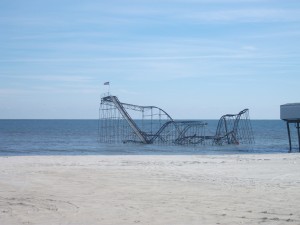But this last was the most demanding by far. Our team moved every day, from Newark to Brooklyn to Manhattan to Monmouth University (NJ) and finally to Richard Stockton College just north of Atlantic City. This was the effort we had all been working toward, and the one that allowed us to connect with nearly 200 people who could anticipate doing the local hard work of mapping a path to recovery for both New York City and dozens of small municipalities on Long Island and in New Jersey. Their questions and doubts were often poignant and penetrating. Our team tried hard to be diligent in response.
There are real differences in style and circumstance between all these communities. Some of those differences, if we let them, can speak deeply to issues of faith and integrity. Many in New York City expressed real concerns about the degree to which their neighborhoods and neighbors could influence or speak to City Hall, from which a great deal of power flows. There were fears that the mayor’s staff might not hear some or all of their concerns. There are real vulnerabilities in certain urban areas of New York, most notably in the Rockaways, a long spit of land extending westward of John F. Kennedy International Airport that is home to no fewer than 118,000 people, many of whom are far less familiar with other neighborhoods right in the Rockaways than other people elsewhere are with other parts of their entire city, let alone other parts of Queens or the rest of New York. New York is a gigantic city of 8 million that can seem harshly impersonal and difficult to traverse because of its geography, with Queens and Brooklyn on Long Island separated from Manhattan, another island, which is also separated from the Bronx, a southern extension of the mainland, all of which are completely separated from Staten Island. It costs $13 to use the Holland Tunnel from New Jersey to New York, the same price charged to use the Verrazano Bridge from Brooklyn to Staten Island. The cost of transportation must be an intimidating and isolating factor for the poor. Meanwhile, one bridge connecting the Rockaways to the rest of the city is out, forcing commuters on the New York elevated/subway system to use other stops. Isolation becomes a real problem; isolation and lack of access allowed 130 homes in Breezy Point, a Rockaways neighborhood, to burn down during Sandy because fire trucks could not reach them. How do homes burn down in a hurricane? Electrical systems corroded by salt water can short, and once the fire spreads, look out. In a densely developed area, the damages escalate quickly.
If you are guessing that all this implies that there is some serious work to be done on issues of social equity in the face of disaster, you are right. Occupy Wall Street has morphed into Occupy Sandy, mobilizing volunteers in part to raise issues, and voices, on behalf of the underrepresented segments of the city, although they are hardly the only ones. We heard a similar refrain two months earlier from the Rockaways Development and Revitalization Corporation, which has been aided by New York Metro APA volunteers trying to help the nonprofit group assist with small business recovery throughout the peninsula.
But there are also major issues of physical planning and public safety that must be confronted. A Florida colleague, Lincoln Walther, and I joined FEMA colleagues for a Thursday morning, April 4, tour that began at our hotel in West Long Branch, New Jersey, and visited such shoreline communities as Sea Bright, which was hit hard in places by the storm surge directly off the ocean. We saw private clubs whose members include well-known celebrities quickly rebuilding—money matters—while those more dependent on permits and public assistance had to wait. The towns can easily rationalize this. Those shoreline properties pay most or at least much of the property tax load. They provide seasonal jobs for those who live nearby. It can still be troubling to find that there seem to be two sets of rules, of course. In other places, however, houses built atop of, or at least unprotected by, dunes within a short distance of the shore often collapsed on top of one another, causing spectacular damage. In the workshops, I showed a photo of one such home and raised the question of why we cannot do better. Nonetheless, in many shoreline and barrier island communities, there is a palpable tension between economic development and public safety. This is the Jersey Shore, one of America’s playgrounds. A large dune system proposed by the U.S. Army Corps of Engineers is embraced by some, seen as cutting visitors off from the ocean by others. There is no doubt such natural systems are effective in mitigating damage to inland structures. But people still pay willingly for the privilege of sitting on the ocean’s edge. What we can say for certain is that the experience of Hurricane Sandy has moved the public debate visibly in the direction of more public safety.
It is exceedingly difficult to remain dispassionate in the face of such massive challenges. Congress passed a supplemental budget for Sandy recovery of approximately $60 billion. New Jersey alone estimates damage to homes and businesses totaling about $37 billion. New York faces long-term questions of protecting vital public infrastructure like subways and tunnels from future storms and sea-level rise (resulting from global warming). The undertaking of recovery planning strikes me as one that challenges our values to the core if we feel any compulsion to try to answer the most compelling questions it poses. And we can all assume that if this happened once, it can happen again.
Jim Schwab
